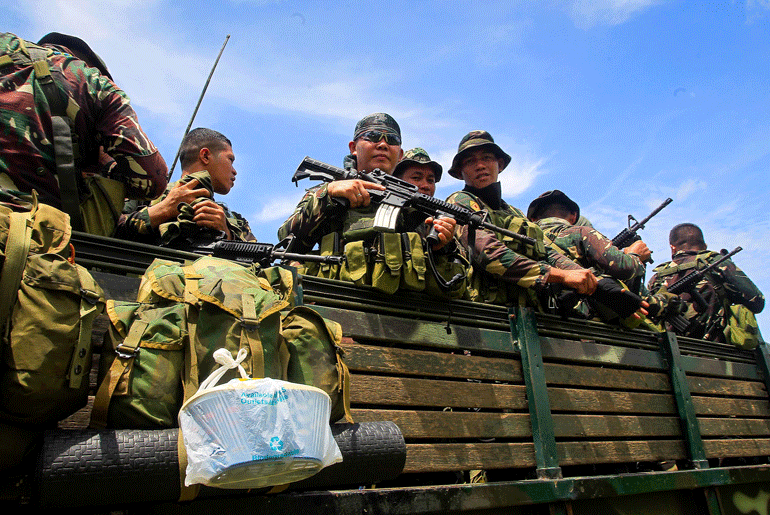Authorities begin the long process of rebuilding Marawi City, even as fighting against militants continues in isolated areas

Mindanao State University (MSU) in Marawi City reopened its doors on Tuesday as the war-torn region begins to get back on its feet after months of fighting between the military and the Islamic State-affiliated Maute Group.
The university, which was briefly occupied by militiamen in May, welcomed back 7,000 students and 3,400 faculty and administrative staff, as well as 300 soldiers for security purposes, the Straits Times reported.
However, just hours before classes were set to resume at MSU, gunfire rang out in in Marantao, a town 3km away from the university, as security forces at a checkpoint exchanged fire with about 20 militants between 5:30 am and 7:00 am. Although some student buses were temporarily suspended, military spokesman Restituto Padilla was eager to point out that the university campus was in no danger of being caught in the crossfire.
On 29 June, Philippine President Rodrigo Duterte said that the fighting would be over “in a matter of days”. Weeks later, he appealed to Congress to extend martial law on the Muslim-majority island beyond the constitutional limit of 60 days in order to safeguard public safety.
Duterte’s request was granted by legislators but met with fierce opposition from rights groups and activists, who said the extension was unnecessary and part of a wider power grab by the president. The extension means that martial law will remain in force until 31 December, though the Philippine military claims to have penned the remaining 50 or 60 militants into a 0.5 kilometre-squared area.
While the military has encouraged residents of surrounding towns to return to their homes, Marawi itself remains out of bounds for civilians. As many as 200,000 residents were forced from their homes by the fighting, which broke out after a failed military raid to capture the IS-linked terrorist leader Isnilon Hapilon and may last for another month, according to defence secretary Delfin Lorenzana.
“We are slowly opening the road to normalcy for many of the communities that are far from the main battle area, as we work to really solve the presence of the armed elements, the remnants of the Maute group inside,” said Padilla, the military spokesman.
To date, a reported 129 members of the security forces, 45 civilians and an estimated 583 militants have been killed in the fighting.
University reopens its doors as southern Philippines slowly returns to normalcy
Authorities begin the long process of rebuilding Marawi City, even as fighting against militants continues in isolated areas Philippine military troops ride on a truck on Mindanao island in the southern Philippines on 21 June. Photo:EPA/Mark Navales

